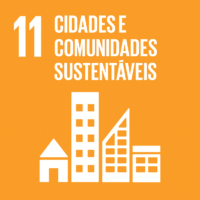Ciência-IUL
Publicações
Descrição Detalhada da Publicação
Portugal Telecom Data Centre. Covilhã. Portugal
Título Revista
TC Cuadernos
Ano (publicação definitiva)
2022
Língua
Inglês
País
Espanha
Mais Informação
Web of Science®
Esta publicação não está indexada na Web of Science®
Scopus
Esta publicação não está indexada na Scopus
Google Scholar
Esta publicação não está indexada no Google Scholar
Abstract/Resumo
The data processing centre of the former Portugal Telecom, now Altice Portugal, was designed for the site of the then disused Covilhã Airfield, occupying a slight elevation in the magnificent Cova da Beira valley. Its infrastructure has the capacity to install more than 50 000 servers connected to the high-speed fibre
optic network with symmetrical speeds of 100 Gbps, and its infrastructure is fed by renewable energy sources and comprises a photovoltaic plant. The project included four technical blocks – housing drainage and data processing facilities and with practically no human occupation – and a support building – destined for offices, storage and parking areas where up to 700 people could work – in a total area of around 75,500 m2.
Of the four technical blocks planned, only one has yet been built. The main problem in any building with this programme is the dispersion of the heat produced. Since computers generate a lot of heat, it became necessary to dissipate it through forced ventilation with high-speed airflow (air free cooling), exploiting
the large temperature difference between the inside and the outside. A series of large fans were then placed, positioned so as to take advantage of the main wind direction, and causing the air to move in and out, cooling the equipment. Surrounding the building is also a water mirror, in order to receive the heat produced by the cooling system itself and dissipate it, creating at the same time opposition between the strong material presence of the technical block and its reflection in the water.
Agradecimentos/Acknowledgements
--
Palavras-chave
Architecture,Carrilho da Graça,Construction,Portugal Telecom Data Centre,Covilhã,Cova da Beira,air free cooling
Classificação Fields of Science and Technology
- Outras Humanidades - Humanidades
Contribuições para os Objetivos do Desenvolvimento Sustentável das Nações Unidas
Com o objetivo de aumentar a investigação direcionada para o cumprimento dos Objetivos do Desenvolvimento Sustentável para 2030 das Nações Unidas, é disponibilizada no Ciência-IUL a possibilidade de associação, quando aplicável, dos artigos científicos aos Objetivos do Desenvolvimento Sustentável. Estes são os Objetivos do Desenvolvimento Sustentável identificados pelo(s) autor(es) para esta publicação. Para uma informação detalhada dos Objetivos do Desenvolvimento Sustentável, clique aqui.

 English
English

